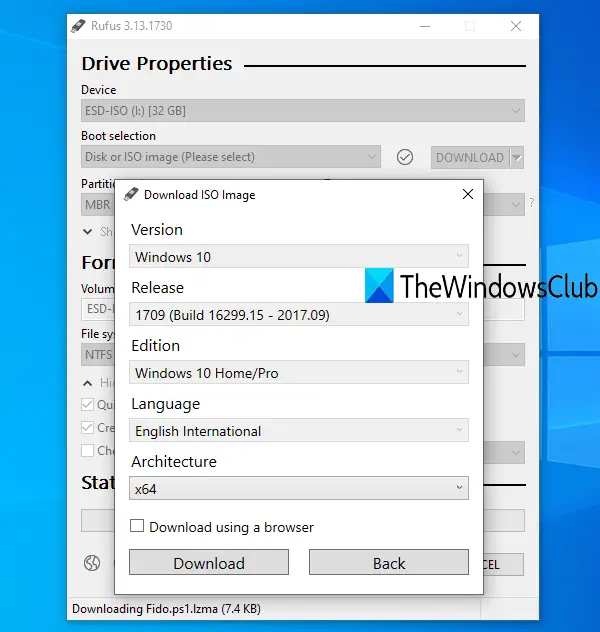A dual-boot setup enables us to run various operating systems without the need for additional hardware, on a single set of hardware, thus reducing total cost. We have already discussed how to dual boot on a single hard drive, that’s why in this guide, we are going to see how to Dual Boot on separate Hard Drives in a very simple fashion.

In this guide, we are going to install Windows and Ubuntu, but you can perform the same step for any two operating systems.
Dual Boot on Separate Hard Drives in Windows
There are various reasons why dual booting on different hard drives is recommended. It gives additional space for the operating systems, minimal clusters on the partitioning table, and there is no need for data backups for the installed OS as you will not be altering it. Hence, we will also learn how to dual boot on separate Hard Drives.
Prerequisites
Before setting up the dual boot in Windows, it’s necessary to make sure of certain things such as having enough space in both the drives (minimum 50GB is recommended), unlimited Internet data for downloading updates, and a Windows bootable medium, generally a CD or USB drives (USB is preferred).
After checking all the boxes mentioned in the Prerequisites, follow the steps mentioned below to make dual booting from different hard drives possible.
- Make the bootable media from Windows ISO
- Make the bootable media from Ubuntu ISO
- Install the operating system
Let us talk about them in detail.
1] Making the bootable media from Windows ISO

We should have a bootable drive if we want to make the dual boot. Some days ago, CD or DVD drives were used for bootable purposes. But nowadays USB drive is used to make it bootable. Follow the steps mentioned below to make bootable media.
- First of all download the ISO file from Microsoft’s website (microsoft.com).
- After downloading the ISO files from the website, you will need to flash the file to the USB drive.
- First, we need to download and install rufus.ie.
- Click on the Select button, navigate to your ISO file, and add it.
- Fill in all the required blanks and then click on Start.
Once you have created a bootable stick for Windows, move to the next step.
Read: How to Create and Format bootable USB flash drives with Rufus
2] Make the bootable media from Ubuntu ISO
- Download the ISO file from Ubuntu’s official (ubuntu.com).
- Once you download the ISO files, connect the USB drive to the laptop USB port.
- Use Rufus to make a bootable USB drive.
After we have bootable sticks for Windows and Ubuntu, let us learn how to install them on your system
3] Install the operating system
We will have to install an operating system on a dual boot drive in two different scenarios. The first scenario is where our primary OS is ubuntu, and the second one is when our primary OS is Windows. Let us learn both these scenarios in detail.
If the computer’s primary OS is ubuntu.
Follow the prescribed steps to install the Windows operating system on our second hard disk.
- First of all, insert Windows bootable USB drive into the computer and restart.
- Now enter the boot menu by pressing F2, F12, DEL, or ESC key(Different manufacturers has a different key to enter into the boot menu).
- Here, select a USB device from the listed drives and press the enter button.
- Select the second hard disk on which you want to install the Windows operating system and then click next.
- Follow the on-screen instruction and wait until the installation is completed.
Once the installation is completed, your computer will restart automatically. Finally, the bootloader menu will appear which allows you to choose the operating system you want to start.
If the computer’s primary OS is Windows.
If the first operating system of the system is Windows and want to install Ubuntu on the second hard disk then follow the prescribed steps:
- Install Ubuntu USB bootable stick.
- Boot into BIOS.
- Select a USB device from the listed drives and press the Enter button.
- Here, select Ubuntu and choose your language and other preferences and continue until you see the following screen.
- Select the Erase disk and Install Ubuntu radio button and click Install Now.
- Now we should select the second hard drive on which you want to install Ubuntu.
- A warning prompt will appear that notifies you about the partitions that will be formatted, click on Continue.
- Finally, set the time zone and login details to complete the installation process.
Once the installation process is completed, the GRUB bootloader menu will appear on the screen from where you can select the operating system according to your choice.
This way you can have multiple operating systems on two different drives.
Can you dual boot on different hard drives?
Yes, it is possible to dual boot on different hard drives. All you have to do is install different operating systems on different drives and when the system boots up, you will be asked which operating system you want to boot from.
Is it better to dual boot from different drives?
Having dual boot is beneficial especially if you are someone who deals with enormous files. It also ensures minimal clusters on the partitioning table and improves the overall performance of the system.
Read: Risks or disadvantages of Dual Booting Operating Systems.